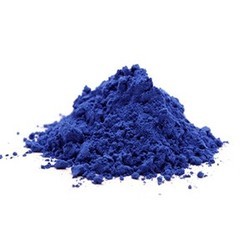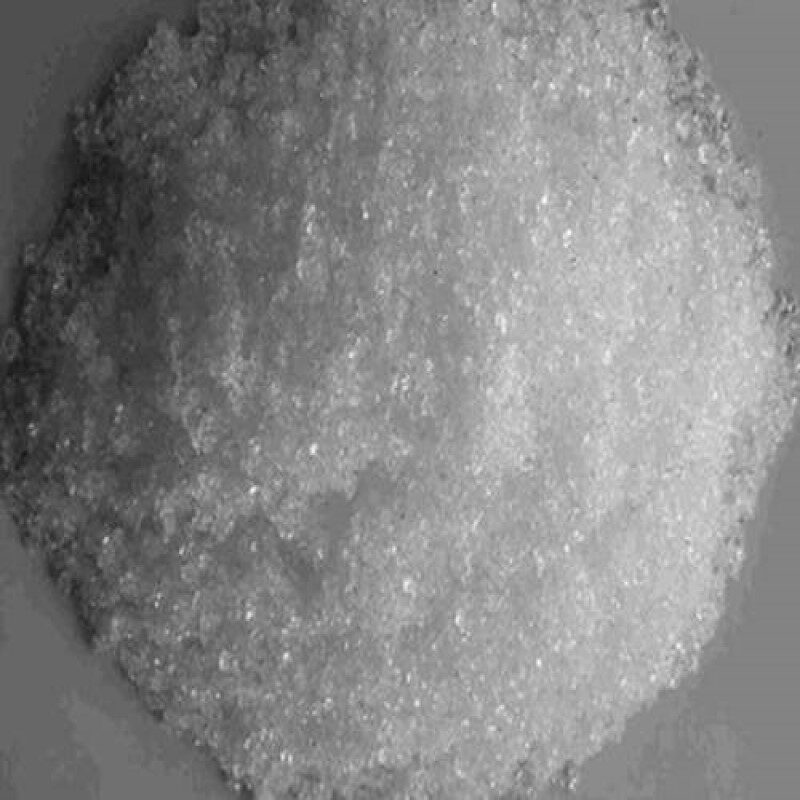Description
Remarks: The material complies as per above specification.
Uses: Methylene Blue oral is used to treat methemoglobinemia and urinary tract infections. Methylene Blue is also used as a dye or staining agent to make certain body fluids and tissues easier to view during surgery or on an x-ray or other diagnostic exam. Methylene Blue is available in generic form.
Packing: 25 kg HDPE Bags/HDPE Drum.
For AMIZARA SPECILITY CHEMICALS LLP
MSDS
Methylene Blue SDS, Safety Data Sheet MSDS Sheet, Material Safety Data Sheet
Section 1:Product Identification
| Product Name & Other Names |
Methylene Blue or Basic Blue 9,trihydrate or Methylene blue trihydrate or 3,7-Bis(dimethylamino)phenazathionium chloride trihydrate or Methylthioninium Chloride. |
| CAS No |
61-73-4 (Anhydrous); 7220-79-3 (Trihydrate) |
| EINECS EC Number |
200-515-2 |
| Molecular Weight |
373.91 |
| Chemical Formula |
C16H18ClN3S-3H2O |
| Relevant uses and uses advised against (if any) |
Industrial Manufacturing. |
| Suppliers |
As per the letterhead. |
SECTION 2 : Hazards Identification
GHS, Globally Harmonized System Classification in accordance with 29 CFR 1910 Classification according to Regulation (EC) No 1272/2008
| Acute toxicity, oral |
Category 4 |
| Skin corrosion/irritation |
Category 2 |
| Serious eye damage/eye irritation |
Category 2A |
| Specific target organ toxicity, single exposure; Respiratory tract irritation |
Category 3 |
Labeling according Regulation (EC) No 1272/2008
Hazard statements
| H302 |
Harmful if swallowed. |
| H315 |
Causes skin irritation. |
| H319 |
Causes serious eye irritation. |
| H335 |
May cause respiratory irritation. |
Precautionary statements
| P262 |
Do not get in eyes, on skin, or on clothing. |
| P264 |
Wash skin thoroughly after handling. |
| P280 |
Wear protective gloves/protective clothing/eye protection/face protection. |
| P270 |
Do not eat, drink or smoke when using this product. |
| P273 |
Avoid release to the environment. |
| P330 |
Rinse mouth. |
| P362 |
Take off contaminated clothing and wash before reuse. |
| P301+312: IF SWALLOWED |
Call a POISON CENTER or doctor/physician if you
feel unwell. |
| P332+313: If skin irritation occurs |
Get medical advice/attention. |
| P302+ P352 – IF ON SKIN: |
Wash with plenty of soap and water. |
| P305+ P351 + P338 IF IN EYES |
Rinse cautiously with water for several minutes.
Remove contact lenses, if present and easy to do. Continue rinsing. |
| P332+313:If skin irritation occurs: |
Get medical advice/attention. |
| P337+P313 If eye irritation persists |
Get medical advice/ attention. |
| P501 |
Dispose of contents/container to authorized agents only. |
Classification according to EU Directives 67/548/EEC or 1999/45/EC:
Hazard Symbol:
Risk Phrases:
| R22 |
Harmful if swallowed. |
| R36/37/38 |
Irritating to eyes, respiratory system & skin. |
Section 3: Composition / Information on Ingredients
| Product Name & Other Names |
Methylene Blue or Basic Blue 9,trihydrate or Methylene blue trihydrate or 3,7-Bis(dimethylamino)phenazathionium chloride trihydrate or Methylthioninium Chloride. |
| CAS No |
61-73-4 (Anhydrous); 7220-79-3 (Trihydrate) |
| EINECS EC Number |
200-515-2 |
SECTION 4: First Aid Measures
| Inhalation |
Remove to fresh air. Give oxygen if breathing is difficult; give artificial respiration if breathing has stopped.
Keep person warm and quiet; get medical attention.
|
| Ingestion |
Induce vomiting immediately as directed by medical personnel. Never give anything by mouth to an unconscious person |
| Skin Contact |
Immediately flush skin with plenty of soap and water for at least 15 minutes. Remove contaminated clothing and shoes. Wash clothing before reuse. Thoroughly clean shoes before reuse.
Get medical attention if irritation develops. |
| Eye Contact |
Immediately flush eyes with plenty of water for at least 15 minutes, lifting upper and lower eyelids occasionally. Get medical attention. |
SECTION 5 : Fire Fighting Measures
| Fire |
May become a fire hazard at high temperatures. |
| Fire Extinguishing Media |
Use water spray, alcohol-resistant foam, dry chemical or carbon dioxide. |
| Special hazards arising from the substance or mixture |
Carbon oxides, Nitrogen oxides (NOx), Sulfur oxides, Hydrogen chloride gas. |
| Special Information |
In the event of a fire, wear full protective clothing and NIOSH- approved self-contained breathing apparatus with full face piece. |
SECTION 6: Accidental Release Measures
| Personal precautions, protective equipment and emergency procedures |
Use personal protective equipment. Avoid dust formation. Avoid breathing dust/fumes/gas/mist/vapors/spray.
Use individual protective equipment (waterproof boots, suitable protective clothing, safety glasses, etc.). Restrict unprotected personnel from the area.
Prevent any contact with hot surfaces. Do not approach facing the wind. Do not touch the spilled material. |
| Environmental precautions |
Do not let the product enter drains, soil or water sources. |
| Methods and materials used for containment Cleanup procedures and Storage |
Contain spilled material. Cover with an inert, non-combustible absorbent material, (e.g. sand, earth, diatomaceous earth, vermiculite). Vacuum or sweep-up and remove to an approved disposal container. |
SECTION 7:Handling and Storage
| Precautions for safe handling |
Apply according to good manufacturing and industrial hygiene practices. Ensure proper ventilation. Wash thoroughly after handling.
Do not drink, eat or smoke while handling. Avoid contact with skin, eyes and clothing. Minimize dust generation. Avoid breathing dust/fumes/gas/mist/vapors/spray.
Avoid
contact with eyes, skin, and clothing. Keep container tightly closed.
Avoid ingestion and inhalation. Use individual protective equipment (waterproof boots, suitable protective clothing, safety glasses, etc.). Prevent any contact with hot surfaces. |
| Conditions for safe storage, including any incompatibilities |
Store in cool, dry and ventilated area away from heat sources and protected from sunlight in tightly closed original container.
Keep air contact to a minimum. Do not leave the material container open. Store protected from heat, sparks and ignition sources and incompatible materials.
Avoid contact with skin and eyes. Avoid inhalation of dust/mist/vapor. Do not store with incompatible materials like strong oxidizing agents, alkali, dichromates, alkali iodides, reducing agents.
Avoid dust formation and control ignition sources. Containers may be hazardous when empty. |
SECTION 8: Exposure Controls/Personal Protection
| Airborne Exposure Limits: |
None established. |
| Ventilation System |
In general, dilution ventilation is a satisfactory health hazard control for this substance.
However, if conditions of use create discomfort to the worker, a local exhaust system should be considered. |
| Personal Respirators (NIOSH Approved) |
Not expected to require personal respirator usage. For conditions of use where exposure to dust or mist is apparent and engineering controls are not feasible, a particulate respirator (NIOSH type N95 or better filters) may be worn.
If oil particles (e.g. lubricants, cutting fluids, glycerin, etc.) are present, use a NIOSH type R or P filter. For emergencies or instances where the exposure levels are not known, use a full-face positive-pressure, air-supplied respirator. |
| Skin Protection |
Wear protective gloves and clean body-covering clothing. |
| Eye Protection |
Use chemical safety goggles and/or full face shield where dusting or splashing of solutions is possible.
Maintain eye wash fountain and quick-drench facilities in work area. |
SECTION 9: Physical and Chemical Properties
| Appearance |
Methylene Blue is dark green crystals with bronze luster or crystalline powder. |
| Odor |
Odorless |
| Odor threshold |
Not available. |
| pH |
Not available. |
| Relative density |
Not available. |
| Boiling Point |
Decomposes. |
| Melting Point |
190C |
| Flash point |
Not available. |
| Auto-ignition temperature |
Not available. |
| Decomposition temperature: |
Not available |
| Upper/lower flammability or explosive limits |
Not available. |
| Vapor pressure |
Not available. |
| Vapor density: |
Not available. |
| Evaporation rate |
Not available. |
| Flammability (solid, gas) |
Not available. |
| Partition coefficient:n-octanol/water |
Not available. |
| Solubility |
Soluble in water. |
| Viscosity |
Not available. |
| Molecular Weight |
373.91 |
| Chemical Formula |
C16H18ClN3S-3H2O |
SECTION 10. Stability and Reactivity
| Stability |
Methylene Blue is stable under ordinary conditions of use and storage. |
| Hazardous Decomposition Products |
May produce oxides of nitrogen, sulfur and carbon along with chlorine compounds when heated to decomposition. |
| Hazardous Polymerization |
Will not occur. |
| Incompatibilities |
Strong oxidizing agents, alkali, dichromates, alkali iodides, reducing agents. |
| Conditions to Avoid |
Heat, flame, ignition sources, dusting and incompatibles |
SECTION 11:Toxicological Information
| Methylene Blue |
1180 mg/kg LD50 oral rat. Investigated as a mutagen, reproductive effector. |
| Carcinogenic Effects |
Not a reported carcinogen by IARC, NTP, ACGIH, OSHA. |
SECTION 12. Ecological Information
| Environmental Fate |
When released into the soil, this material is not expected to evaporate significantly. When released into water, this material is not expected to evaporate significantly.
This material has an estimated bioconcentration factor (BCF) of less than 100. This material is not expected to significantly bioaccumulate.
When
released into the air, this material is expected to be readily degraded by reaction with photochemically produced hydroxyl radicals.
When released into the air, this material may be removed from the atmosphere to a moderate extent by wet deposition. When released into the air, this material may be removed from the atmosphere to a moderate extent by dry deposition. |
| Results of PBT and vPvB Assessment |
This substance/mixture contains no components considered to be either persistent, bioaccumulative and toxic (PBT), or very persistent and very bioaccumulative (vPvB) at levels of 0.1% or higher. |
SECTION 13. Disposal Considerations
Whatever cannot be saved for recovery or recycling should be managed in an appropriate and approved waste disposal facility. Processing use or contamination of this product may change the waste management options. Dispose of container and unused Methylene Blue in accordance with legal requirements.
SECTION 14. Transport Information
| DOT: |
Not regulated |
| TDG |
Not regulated |
| IATA |
Not regulated |
| IMDG/IMO |
Not regulated |
| ADR/RID |
Not regulated |
SECTION 15. Regulatory Information
USA:
| SARA 313 |
Not applicable |
| SARA 311/312 Hazardous Categorization: |
Acute Health Hazard, Chronic Health Hazard. |
| California Proposition 65 |
This product does not contain any Proposition 65 chemicals. |
SECTION 16:Other Information
European Labeling in Accordance with EC Directives
| H302 |
Harmful if swallowed. |
| H315 |
Causes skin irritation. |
| H319 |
Causes serious eye irritation. |
| H335 |
May cause respiratory irritation. |
Classification according to EU Directives 67/548/EEC or 1999/45/EC
Hazard Symbol
Risk Phrase
| R22 |
Harmful if swallowed. |
| R36/37/38 |
Irritating to eyes, respiratory system & skin. |
Disclaimer:
Our company provides this Methylene Blue MSDS sheet contained herein in good faith but makes no representation as to its comprehensiveness or accuracy. This Methylene Blue MSDS sheet is intended only as a guide to the appropriate precautionary handling of the material by a properly trained person using this product. Individuals receiving the information must exercise their independent judgment in determining its appropriateness for a particular purpose.




